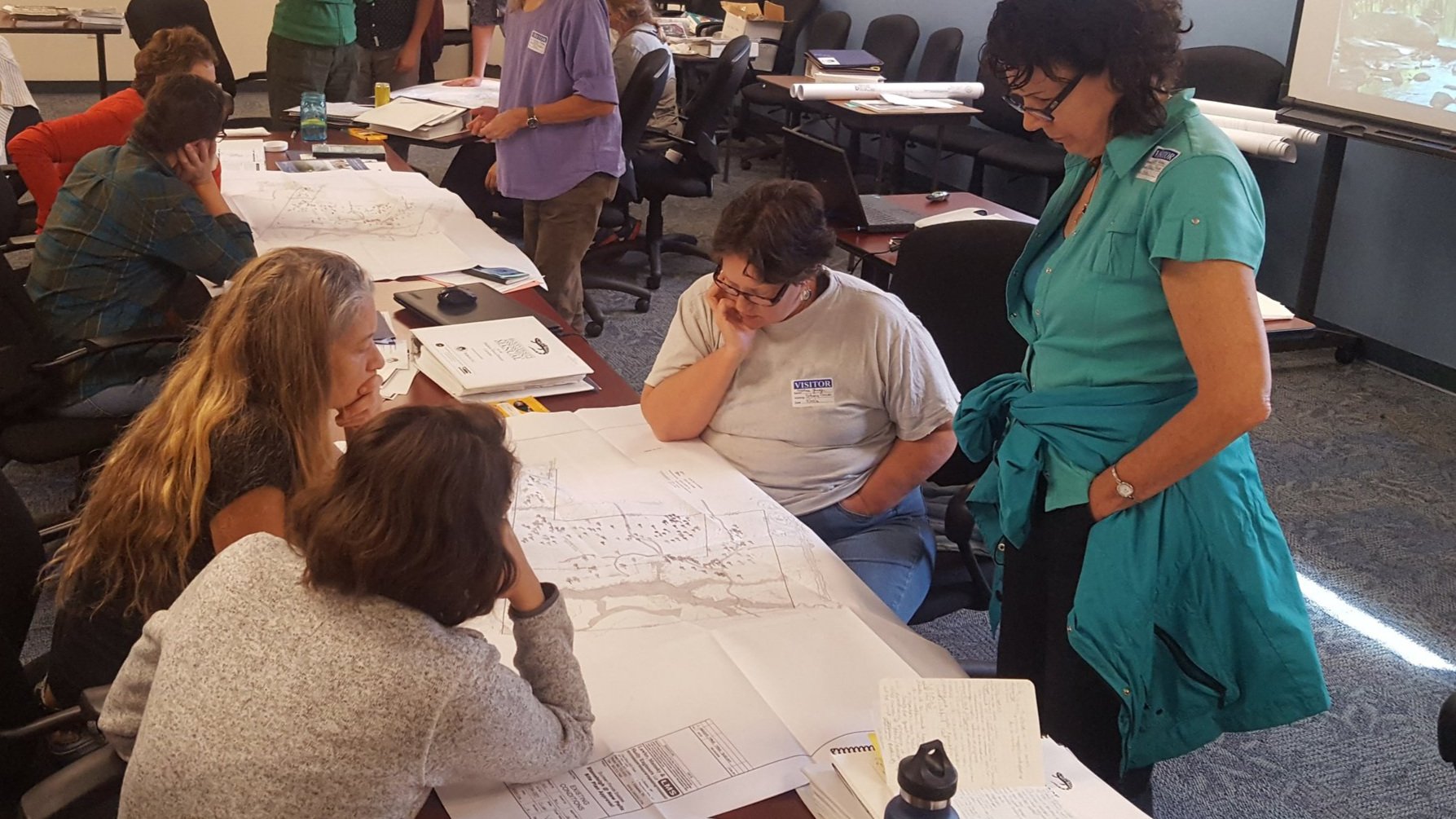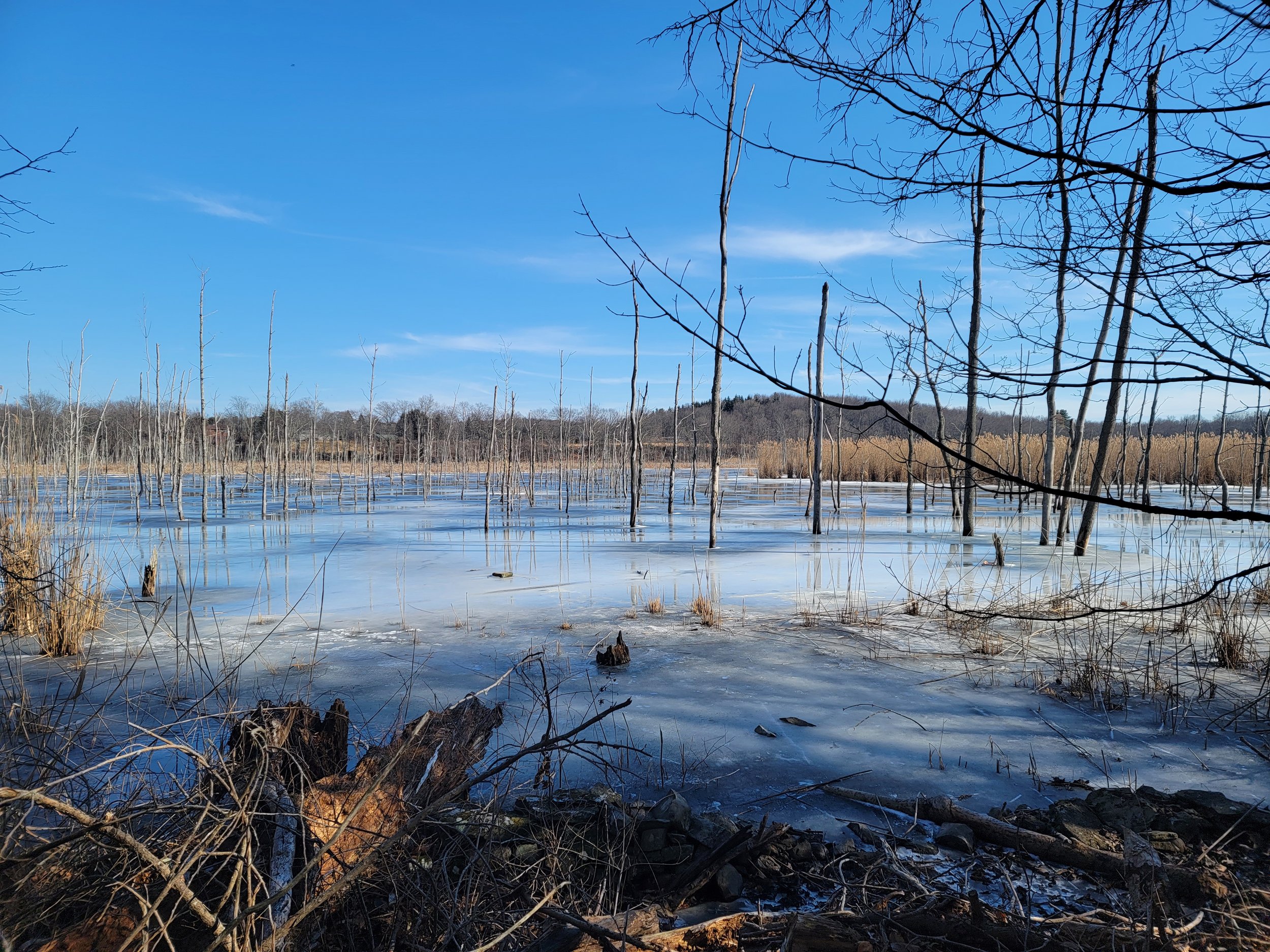
Using Natural Resource Inventories in Designating Critical Environmental Areas (CEAs)
Critical Environmental Areas (CEAs) are areas officially designated by counties or municipalities to alert landowners, developers, and regulatory agencies to features of importance or concern during environmental review under the SEQR process. This webinar presented the process of designating CEAs, with recent examples in the Hudson Valley, and will address convening a working group, engaging with and informing landowners within a proposed CEA and the general public, and the step-by-step process of identifying, delineating, describing, and adopting a CEA.

Identification and Protection of Small Streams and Wetlands: A Field Workshop 2023
In this field workshop, we discussed the values of small wetlands and streams; how to find and identify them; threats to wetlands and streams; and effective regulatory and non-regulatory protections.

Get Outside! Wildflower Seed Collecting Workshop to Preserve Native Plants and Genetic Diversity
Get Outside! workshop hosted by Partners for Climate Action Hudson Valley and sponsored by Dirty Gaia and Hudsonia! Native plants are essential for healthy, climate-resilient ecosystems. Learn plant identification and responsible seed collection techniques.

NY Flora Association (NYFA) Field Trip: Exploring Little Stony Point
Little Stony Point, part of Hudson Highlands State Park, is a small, rounded “point” that juts out into the Hudson River. It has a nice variety of habitats for such a small area, including mature oak forest, mixed-hardwood forest, a rocky summit (with excellent views), tidal sandy shore, and two dry, sandy meadows, where several interesting species dwell.

“Urban Biodiversity: What a Damaged Landscape Teaches” - A ‘T’ Space / Steven Myron Holl Foundation Lecture
This lecture “Urban Biodiversity: What a Damaged Landscape Teaches” was delivered online by Erik Kiviat on July 6th, 2023 for the Virtual Public Lecture Series. These free events are organized by 'T' Space / SMHF in the framework of the 2023 Summer Architecture Residency program titled "Light + Polychromy".

Planning for Nature in Your Community Workshops
Which natural areas are most vital in my community? How do we plan for a future that sustains nature and quality of life for residents? What types of conservation policies have been successful in other communities? This workshop addressed these questions and introduced approaches for conserving natural areas and water resources from the town-wide scale to the site level.

Flat Rock Brook Nature Association Book Talk
Flat Rock Brook Nature Association invites author Erik Kiviat to present the findings from the book he recently published with Kristi MacDonald: Urban Diversity - The Natural History of the NJ Meadowlands. Wednesday, May 24th, 2023 (in-person)

Book Talk at Teaneck Creek Conservancy: Urban Diversity - The Natural History of the NJ Meadowlands
Arranged by Hackensack Riverkeeper and the Puffin Cultural Forum, Teaneck Creek Conservancy invites author Erik Kiviat to present the findings from the book he recently published with Kristi MacDonald: Urban Diversity - The Natural History of the NJ Meadowlands. Friday, May 5, 2023 (in-person)

WALK THE LAND: Marsh and Woodland Habitat Walk at Vlei Marsh with Erik Kiviat
Join us for an early spring walk and discover the diversity of habitats at Vlei Marsh, one of Winnakee Land Trust’s most interesting and ecologically significant protected lands.
This program is a co-presentation of Winnakee Land Trust, Dirty Gaia and Hudsonia. Saturday, May 6, 2023 (in-person)

Introduction to Hudson Valley Habitats and Biodiversity Conservation
From tidal wetlands to grasslands, large forests, and rocky crests, the Hudson Valley is home to diverse habitats that support abundant fish, wildlife, and plant species, and provide numerous benefits to local communities. Despite comprising just 10% of the state’s land area, the Hudson Valley supports nearly 90 percent of the bird, mammal, reptile, and amphibian species that live in New York. The region is also one of the fastest growing in the state, making conservation of this rich natural heritage even more urgent.

